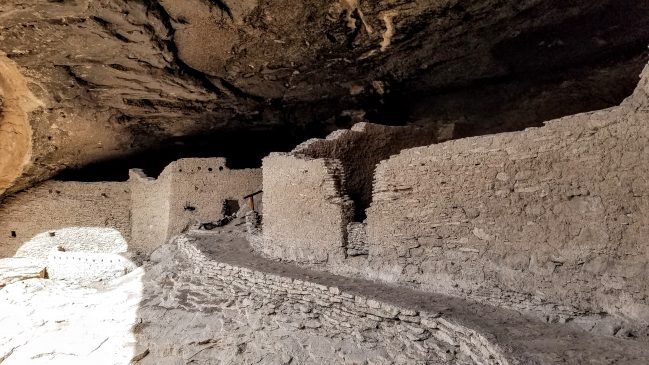One of the best parts of the Southwest is the amount of cultural identity that is within this region of the United States. A very important approach to have while visiting and traveling to the region is to have a sense of cultural relativism. Some of my favorite places to visit in New Mexico and the Southwest in general are cliff dwellings and its always important to maintain that sense of cultural relativism and respect sacred sites throughout the region. With that said, as a part of my anniversary weekend, my girlfriend and I made a large point of making the center our trip to visit the Gila Cliff Dwelling National Monument sense neither of us had ever been there.
After spending the night in Silver City, we woke up at around 7 am and left the hotel about 7:45. We made a quick drive thru stop for some breakfast and we were on our way. The front desk attendant had told us that it takes roughly 2 hours to get there from Silver City. The drive was fun, if you love twists, turns, ups and downs; and if you are the person who is driving.
So about halfway through the drive, we pulled over to an overlook area of the Gila National Forest Wilderness. 
I definitely plan to come explore this region more after winter passes. The roads definitely will be dangerous during snow storms.
So after the quick stop we continued onward to the Gila Cliff Dwelling National Monument. We stopped at the visitor center to learn more about the cliff dwelling and more about the region. Some of the information was stomach turning for myself when I realized the type of devastation mankind can cause toward the equilibrium for an eco-system. For instance, the last Merriam elk was killed by 1900, Mexican wolves were extinct to the region by 1921, the last grizzly was gone by 1933, and in the 1950s’ the Gila River had lost its last otter. Its depressing to say the least.



After taking a moment, we got back in our car headed toward the cliff dwelling. Although I had seen plenty of pictures of the dwellings, I really didn’t know anything about them. Talk about a great learning experience. Some of the information I learned was the dwellings didn’t have many restorations made and were mostly the original buildings that were intact from when they had first been built. Additionally, it has been theorized that the Mogollon, who are traditionally a nomadic indigenous group, had built the dwellings and only lived there for roughly 25 years.





